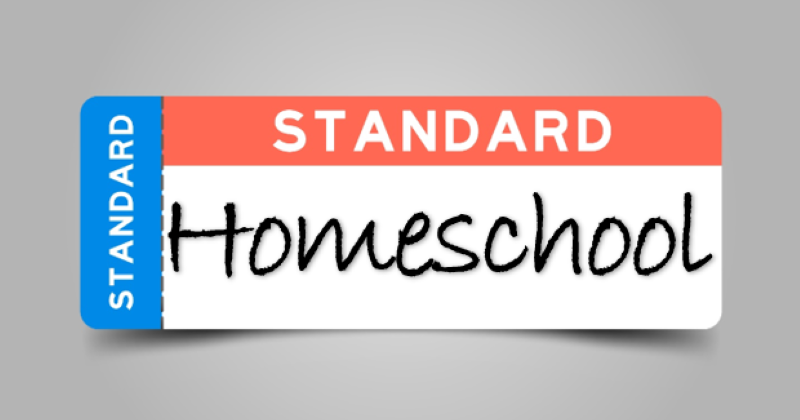REQUIREMENTS MANAGEMENT: LEARNING STANDARDS

Requirements Management: Learning Standards
Learning Standards: A Guide to Effective Requirements Management in Homeschooling
In the context of public school, the term standard is used to refer to educational goals, expectations, or measures of student achievement. Let's explore the meaning of the term standard:
Standard:
- A standard in education generally refers to a set of criteria or learning objectives that students are expected to achieve at a specific grade level or within a particular subject area.
- Educational standards are typically established by educational authorities, such as state or national education departments, and are used to guide curriculum development, assessment, and instruction.
- Standards provide a framework for what students should know and be able to do at different stages of their education.
In the context of homeschooling:
Homeschooling Standards:
- Homeschooling parents may choose to align their curriculum with state or national educational standards to ensure that their children are meeting the same academic expectations as students in traditional schools.
- Some parents may also follow their own set of educational standards based on their beliefs, educational philosophy, or specific goals for their child's education.
Ultimately, the choice between standards in homeschooling depends on the educational philosophy of the parents, any legal requirements in their jurisdiction, and their specific goals for their child's education. Some homeschooling families may use a combination of both standards to create a well-rounded and individualized learning experience.
One crucial aspect of establishing standards is requirements management, a systematic process that involves identifying, documenting, prioritizing, and tracking the educational needs and goals of a homeschooled student. In the following section, we will focus on aligning the homeschooling curriculum with relevant academic standards and benchmarks, ensuring that the student not only meets but exceeds expectations for their grade level.
ALIGNING WITH ACADEMIC STANDARDS:
The foundation of a robust homeschooling program lies in aligning the curriculum with academic standards and benchmarks. Academic standards are guidelines that outline the knowledge and skills students should acquire at each grade level. By incorporating these standards into the homeschooling curriculum, parents can ensure that their child is receiving an education that is on par with, or even surpasses, traditional schooling.
Here are some key steps to effectively align the homeschooling curriculum with academic standards:
- Research Local Standards: Identify the academic standards and benchmarks relevant to your location. These may be set by the state, district, or national education authorities. Familiarize yourself with these standards to understand the expectations for each grade level. For families residing in South Carolina, links to the Family Friendly Standards, provided by the South Carolina Education Oversight Committee, are maintained from PIE’s website for your convenience and may be used as a guideline.
- Choose a Curriculum Framework: Select a curriculum framework that aligns with the academic standards. Many homeschooling programs and resources are designed to meet these standards, making it easier for parents to ensure comprehensive coverage of required topics. Recommended resources are available to help you achieve your goals.
- Customize and Supplement: Tailor the curriculum to your child's interests, learning style, and pace. While adhering to the academic standards of your choice, you should consider customizing lessons and supplement materials to enhance the learning experience. This personalization can foster a deeper understanding of subjects. Educational Approaches: Preferences is there to help you get started.
- Regularly Review and Update: Academic standards may change over time. Stay informed about updates to ensure that your homeschooling curriculum remains aligned with the latest educational expectations. Regularly review and update your materials to reflect any changes in standards.
MEETING AND EXCEEDING EXPECTATIONS:
Homeschooling provides a flexible environment that allows students to progress at their own pace. Therefore, the goal should not merely be to meet academic standards but to exceed them. Here are some strategies to help your homeschooled child excel:
- Set High Expectations: Challenge your child by setting high expectations. Encourage them to explore advanced topics, pursue projects of interest, and delve deeper into subjects that captivate their curiosity.
- Assess and Adjust: Regularly assess your child's progress through tests, projects, and discussions. Use these assessments as tools for understanding their strengths and weaknesses, adjusting the curriculum accordingly to provide additional challenges where needed.
- Encourage Independent Learning: Foster a sense of independence in your child's learning journey. Encourage them to take initiative, conduct research, and pursue their interests outside the structured curriculum. This autonomy can lead to a more enriching educational experience.
- Explore Enrichment Opportunities: Seek out enrichment opportunities such as extracurricular activities, field trips, and community involvement. These experiences can complement the academic curriculum and provide a well-rounded education.
Conclusion: Requirements management in homeschooling, particularly aligning the curriculum with academic standards, is a critical component of ensuring a high-quality education. By following these guidelines, parents can create a homeschooling environment that not only meets but exceeds academic expectations. The flexibility of homeschooling allows for a personalized and enriched learning experience that can shape a child's educational journey in a truly meaningful way.
Requirements Management: Learning Standards